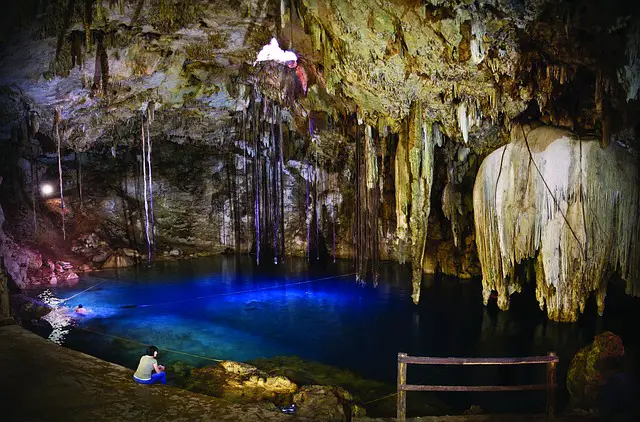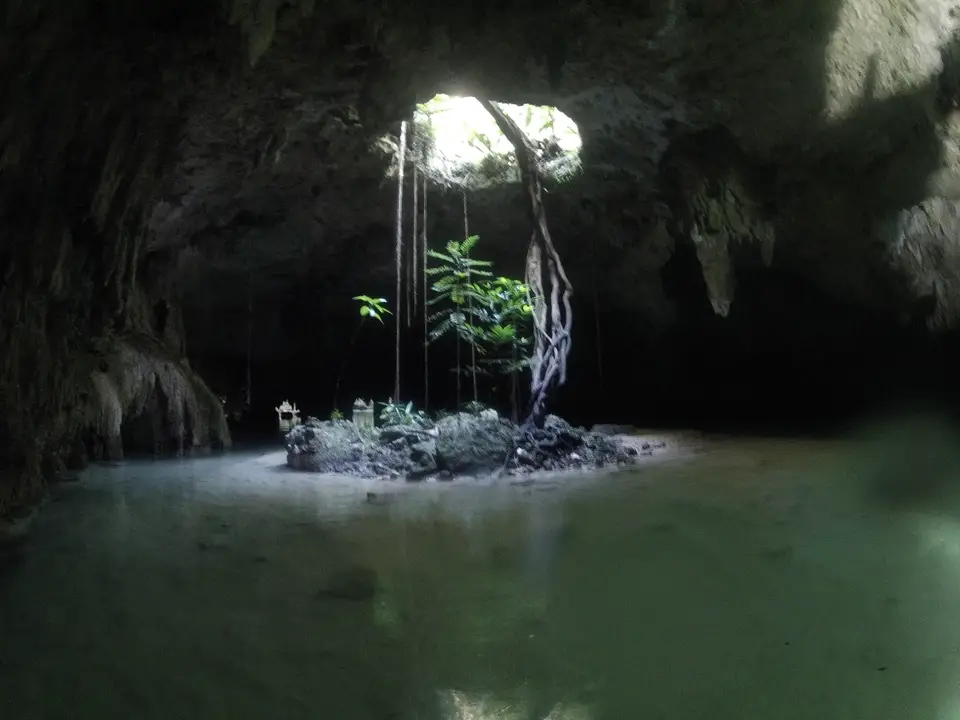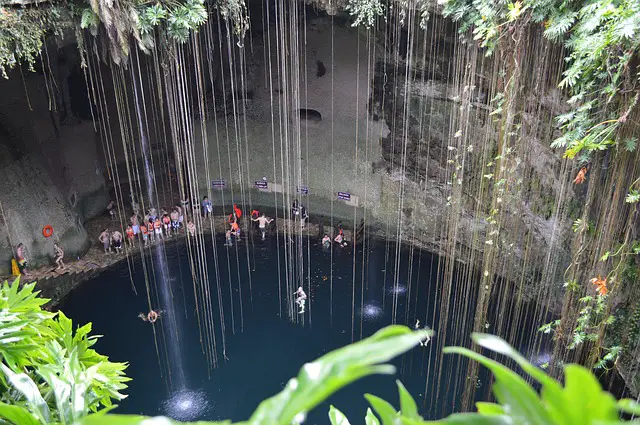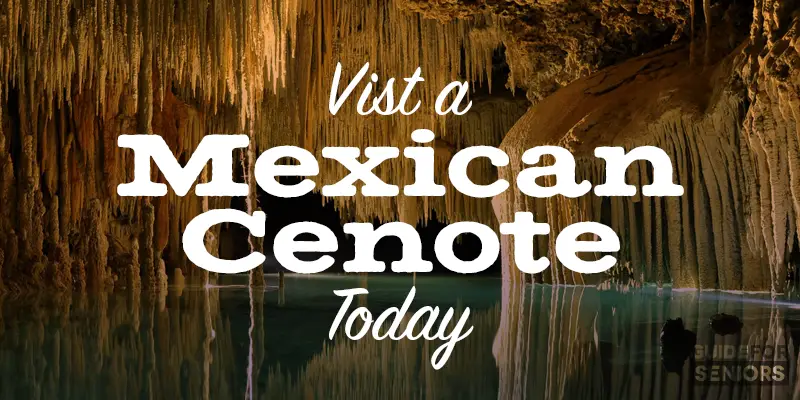Mexican Cenote
A cenote is “a natural pit, or sinkhole, resulting from the collapse of limestone bedrock that exposes groundwater underneath.” The Yucatán peninsula is a limestone plain and does not have any streams or rivers. Mexican cenotes are scattered across the peninsula so clean, fresh water is available there. For the Mayan civilization, the cenotes were their main access to water. Without them, the Mayans would not have survived.

You do not need to worry about the Mexican cenote collapsing while you are there. It took at least a million years for a cenote to form. Rainwater, full of carbon dioxide (a weak acid) trickled thru the limestone and dissolved the mineral, calcite, in the limestone. Since there is no place in the Yucatan peninsula that is high above the water table, any deep hole that forms will be filled with water. Thus as the limestone dissolved, a cenote was formed.
Cenote Water
The cave or sinkhole formed by the cenote becomes full of clear water from rainwater or from the groundwater. People in Mexico use this clean water for drinking. Many travelers come to Mexico to see and swim in their cenotes. The Mexican government requests all who enter the water of the cenote to avoid all skin products, including sunscreen. It is quite an experience to visit and especially to swim in a cenote.

The water is amazing. You can easily see all the way to the bottom. It appears that the water is a few inches to a few feet deep but this is often deceiving. The deepest cenote has been estimated to be as deep as 330 feet. Although the cenote appears to be sterile, many fish inhabit them. If there is access to sunlight, often plants will be growing up towards the sun.
From Playa del Carmen in Mexico, it is not difficult to visit a Mexican cenote. The Yucatan is known to have a very wide range of these sinkholes and caves. Some are very large like a lake but many only have a very small opening. There are always scuba divers as well as snorkelers enjoying the larger cenotes.

If you visit the Yucatán peninsula, do not miss the opportunity to visit a Mexican cenote.
Read more at GuideForSeniors.com for all things senior.









0 Comments